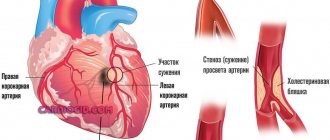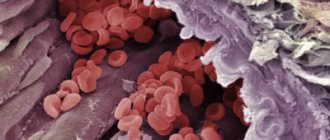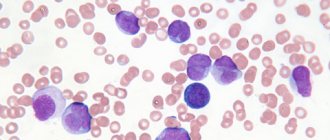The hematopoietic system is a very delicate structure. Despite quite a lot of endurance, it quickly goes into dysfunctional mode. The threshold for the development of pathology is high, but once a disorder occurs, the body is practically unable to cope on its own.
As part of the diagnosis, a method such as studying the average platelet volume is used (the norms are presented here). This complex term refers to the ratio of mature and unready formed cells. Otherwise, the indicator is designated as MPV. It is also present in a standard blood test.
If the average platelet volume is increased, this means that immature types predominate in the bloodstream - they leave the bone marrow too quickly and are abnormally large in size or shape. It is clear that such cells cannot perform the functions that lie on them.
The further the MPV indicator moves above the permissible limit of the norm (this is 12.1 fL), the more serious the violations. Objectively, the disease manifests itself as coagulopathies and slow coagulation.
Treatment is not always necessary. Sometimes the disorder occurs spontaneously, under the influence of physiological factors. But it is possible to assert that the process is “normal” only after diagnosis.
The essence of the disorder and the mechanism of its development
The disorder is based on a group of pathogenetic factors. As a rule, they are not found in the system. Most often, one specific “culprit” is found in the patient.
Unfavorable heredity
The bone marrow works according to a pattern predetermined before birth. Its functionality and “sensitivity threshold”, endurance are determined genetically.
If the parents' material was defective, there is a high probability that the patient himself will encounter problems. The reason is mutations.
They are not always caused by genetic mechanisms themselves, inheritance.
Spontaneous processes often occur when the material itself is damaged. For example, after the mother suffered an infectious disease in the early stages, etc.
Chronic inflammatory processes
Not necessarily septic. Autoimmune forms are also possible. In this case, the average platelet volume increases due to the production of prostaglandins and other substances. Typical inflammatory mediators.
They perform the main role: they drive blood to the affected area, but there is also a downside. These compounds inhibit the functioning of the bone marrow and reduce the rate of maturation of formed cells. Therefore, it is impossible to achieve recovery without high-quality correction of inflammation.
Functional bone marrow diseases
That is, disorders that are not associated with damage to this structure. Anatomical integrity and other factors remain intact. Only the abilities and capabilities of the tissues suffer.
This happens for various reasons. If a person takes antibiotics, he receives cytostatics. Patients with radiation sickness are also at risk of experiencing bone marrow suppression. Not necessarily in a complex form.
Sometimes there are no external manifestations of radiation damage at all. The high-risk group includes workers at nuclear power plants, the mining industry, etc.
Body structure disorders
For example, after removal of the spleen. This organ is a depot for platelets and more. That is, it accumulates formed cells and, if necessary, releases them into the blood.
It is quite possible that the disease has existed for a long time, the body has simply learned to compensate for the disorder. As soon as such an important “storage” disappears, pathology rises to its full extent.
Sometimes it is not possible to determine the mechanism at all. In this case, doctors talk about an idiopathic decrease in the average platelet volume. An indeterminate diagnosis is reviewed as soon as new information becomes available.
This is not an independent type of pathology, but rather an insufficient diagnostic result and a partial description of the disease. It will be clarified in the future. It is the matter of time.
When are upward deviations considered normal and when are they not?
The process of determining platelet levels on a hematology analyzer is much more efficient and accurate than the old methods of counting flat cells on glass. MPV – the average volume of these elements is presented in the form of a histogram. Young cells are on the right, old cells are on the left. The size of each element allows us to judge platelet activity. Old cells are smaller and not as dynamic as young ones. Increased MPV values indicate:
- possible anemia resulting in bleeding;
- a hereditary disease in which flat cells with defects are synthesized (macrocytic thrombodystrophy of Bernard-Soulier);
- tendency to bleed.
These elements are reduced if:
- The patient is pregnant.
- The human body is iron deficient.
- Inflammatory processes are present.
- There is a tumor.
- A heart attack begins.
- Diagnosed with thyroid disease.
- There are kidney diseases.
- Blood clotting is impaired.
- Increased cholesterol.
Platelet tests also use another feature that determines the quality of blood platelets - their width. And it indicates their volume (pdw). If deviations are observed here, this indicates:
- Inflammation in tissues or organs.
- Anemia.
- Helminths that have settled in the intestines.
- The presence of malignant tumors.
If the average platelet values are borderline normal or slightly exceed these characteristics, the body does not necessarily have complex diseases. When a similar picture is observed in a child, most likely hematopoiesis is defective, due to which immature flat cells are released. In adults, the above condition is observed after:
- Complex operations.
- Injury
- Internal bleeding.
- Heavy periods in women.
- Taking medications to activate blood formation.
In these cases, flat cells from the bone marrow are released into the blood in high quantities to compensate for the loss of the main fluid. In the process, a large number of unripe flat cells are released.
But there are also pathologies that are characterized by a low or reduced platelet count. If tests reveal a large or small value of these bodies, it is necessary to undergo further diagnostics. You may have diseases such as:
- Thrombocytopenia, when important elements of the blood are destroyed too quickly.
- Enlargement of the spleen and a simultaneous increase in the number of cells in the bone marrow.
- Diabetes.
- Atherosclerosis.
- Deviations in the functioning of the thyroid gland.
- Leukemia.
- May-Hegglin disease.
Abnormalities in platelets are detected in alcoholics or smokers.
It is known that if the level of flat bodies is high, their average volume decreases. And vice versa. This pattern does not work when the patient is diagnosed with diseases:
- thrombocytosis;
- injuries;
- abnormalities in the functioning of the bone marrow.
When a patient receives test results in person, they can only be deciphered by specialists. Even if the patient is sure that the information he has gives him the opportunity to make a diagnosis on his own, it is better to consult with his doctor or consult a professional hematologist. It will analyze all indicators and characteristics and compare even those values that in most cases do not affect each other. If in doubt, it is advisable to re-test. And only after this the patient is given a final diagnosis and advised what therapy needs to be carried out.
Reasons for the increase and what treatment is needed in different cases
MPV never goes down on its own; there are no natural culprits. Provocateurs are always pathological.
Endocrine diseases
Volumetric layer of diagnoses. Due to the complex localization and variety of possible problems, diagnosis becomes quite difficult.
- Increased concentration of thyroid hormones. Or thyrotoxicosis. Happens frequently. Accompanied by typical symptoms: increased body temperature, blood pressure, and other manifestations.
However, the most important thing remains beyond attention: with thyrotoxicosis, the average platelet volume increases, the number of immature cells increases.
Due to structural defects and abnormally large sizes, they are not able to work as they should. This means their existence is useless. While there are significantly fewer normal platelets.
Treatment: You won’t be able to cope with the problem on your own. Need medicine. To correct hormone levels, iodine preparations are prescribed, and a diet with a reduced content of this microelement is also required.
Hormone levels are measured every week or slightly less often. The criterion for effectiveness is a drop in the concentration of T3, T4. Specific substances of the thyroid gland.
- Diabetes. Classic disease. The amount of insulin decreases or the tissues do not sufficiently perceive the effect of the substance. As a result, glucose levels rise.
In this pathological process, all tissues and organs are affected. From the circulatory system to nerve clusters, cerebral structures.
The average platelet volume increases for natural reasons - this is the result of complex dysfunction of the body.
Treatment: constant sugar control. Insulin should be used as needed. You also cannot do without a special diet with a minimum of fast carbohydrates. This means you need to consume less sugar, flour products, and starch.
Attention:
Once or twice a year, the patient is required to visit an endocrinologist to adjust treatment and check the condition of the body. It's a matter of survival.
Not enough is known about how the quality of the hematopoietic system is affected by other endocrine diseases. Doctors are studying this issue.
Early postoperative period
Regardless of the type and duration of the intervention. The point is different. Injuries, especially those that the body receives during surgical treatment, cause activation of all systems. The platelets literally go crazy trying to close the wounds. It is clear that after surgery the concentration of cells increases.
This is ideal ground for the development of complications. If there is at least a minimal predisposition to hematopoietic disorders, problems cannot be avoided. Because during the recovery period, the bone marrow functions in emergency mode.
Ultimately, it may not be able to withstand the load and will begin to release immature forms of platelets. The best time to check this is the first few days after surgery. In general, this phenomenon is quite normal. Everything recovers on its own after a week or a little more.
The situation is worse if the operation is aimed at changing the configuration of the hematopoietic system. We are talking about removing the spleen. As already mentioned, this organ is responsible for the accumulation of formed cells. Such storage helps compensate for disturbances and reduces the load on the hematopoietic system and bone marrow during emergency situations.
It is impossible to predict exactly what will trigger a failure. After the spleen is removed, the body becomes vulnerable. The risk of encountering hematopoietic disorders is much higher.
There is no specific treatment. It is enough to take a general blood test once every six months. If the patient is predisposed to diseases of this type, then regular consultations with a hematologist will not hurt. Then the doctors decide all the issues. Depends on a situation.
Hereditary diseases
The reasons for the increase in average platelet volume in adults and children may also be genetic. This is relatively rare. We can talk about two main options:
- The parents' source material was defective. Consequently, the child gets the disease in a dominant or recessive way.
- Everything is fine with the fund, a spontaneous mutation occurred. Often the mother herself is to blame: smoking, drinking alcohol, and other bad habits do not add health to the fetus. Although there are exceptions. Environmental factors, the quality of water, food, and air make their negative contribution.
Regardless of what caused it, the outcome is always the same: permanent impairment. How heavy is an individual question.
It is possible to correct the symptoms, but it will not be possible to cope with the primary source. The problem is encoded in the foundation of the body. This is an integral part of it.
Tumors
In the early stages of the neoplastic process, when the tumor is still growing, the average platelet volume may already be more than 12.4-12.7 femtoliters. This is a non-specific sign.
Of course, it is impossible to judge by it alone. But it wouldn’t hurt to pay attention to the deviation. The cause needs to be clarified using instrumental methods.
The location and type of tumor do not matter. But the stage of cancer plays a big role. The larger the neoplasia, the more voracious it is, the higher the MPV.
This happens because education is falling apart. The cells eat so much that there is not enough for everyone. The process of natural death from dystrophy begins. Open wounds form. Platelets rush to plug the gap and so on in a circle. At the final stages, there are practically no mature cells left. Hematopoiesis completely goes into abnormal mode.
Treatment. The tumor must be removed as soon as possible. Preferably totally. That is, so that not a single foreign cell remains.
If necessary, doctors prescribe radiation and chemotherapy. Then dynamic regular monitoring is indicated. If a relapse develops, the series is repeated.
This won't be enough. Because the drugs used to treat cancer themselves depress the bone marrow. The situation gets even worse. That's why special drugs are used. They enhance the production of formed cells and stimulate the bone marrow to work more actively. For example, Etamzilat.
Inflammation
Infectious or autoimmune. This does not play a big role, since in both cases the result is the same. Mediator substances inhibit the functioning of the bone marrow. Platelets are not synthesized in sufficient quantities. Their maturation is disrupted.
Treatment. Depends on the situation. Infectious processes themselves are very heterogeneous.
- When affected by bacteria, antibiotics are needed. Moreover, those to which the agent has no resistance.
- In case of viral infection, special stimulators of interferon production will be required.
- Fungi are sensitive to fungicides.
Other medications are also used as a support measure. If the source is located on the surface, an antiseptic is prescribed for external treatment. There can be many options.
Malignant blood diseases
So-called myeloproliferative disorders. Some are genetically determined, others are secondary. That is, they are provoked by third-party diseases. They are resistant to any form of treatment. Until the doctor finds the primary culprit and eliminates it, medical care will be of little use.
Treatment is etiotropic. We need to look for the underlying pathological process. If heredity is to blame, only the symptoms will have to be eliminated.
Subjective factors
Mean platelet volume (mpv) may be elevated due to poor lifestyle choices. The points described below cannot be called strictly pathogenic. These are the nuances that the patient himself controls. It is within his power to resolve the issue.
These include:
- Smoking.
- Alcohol consumption.
- Intense physical activity.
- Poor diet high in animal fat. Especially if the body is prone to endocrine diseases. And when hormonal imbalances already exist, problems cannot be avoided. It is enough to adjust your lifestyle.
The list does not purport to be an exhaustive description of all possible causes. But it is these factors that usually provoke a violation.
What does another equally important characteristic of red blood cells indicate?
The average hemoglobin content in a red blood cell indicates its level in one of these cells. This value is revealed as follows. The concentrated hemoglobin is divided by the number of red cells in the same amount of blood. It is characterized by laboratory assistants as mchc. It is more accurate than the color indicator and correlates with cell volume. Another name for it is mch. Depending on the deviations of this type of norm, doctors define anemia:
- Normochromic (when the destruction of red blood cells occurs much faster than the formation of new elements).
- Hyperchromic (decreased number of red blood cells).
- Hypochromic (color index less than 0.8).
The concentration of hemoglobin in a red blood cell indicates the saturation of this substance in the cell. If its production is disrupted in the body, deviations from the norm indicate pathology.
The indicator, which is called msns, is derived as a result of a blood examination using a specialized hematological machine. It is defined as the average hemoglobin in red blood cells. It is analyzed using a special formula. It contains the characteristics of hemoglobin in the blood and the part of its total volume that is made up of red cells. It gives a clear understanding of what type of anemia the patient has.
The peculiarity is that MSHC does not detect the absolute value of hemoglobin in red blood cells and does not depend on their volume. It shows its level in the total mass of red cells and reflects saturation.
Normally, this value is if, as a result of the analysis, the indicator varies from 320 to 360 g/l (for an adult organism). In children – 280-380 g/l.
If the measurement is carried out in g/dl, then other numbers are considered the norm:
- From 32 to 36 – in adults.
- From 28 to 38 – in children.
You should not completely correlate your results with the above values, since in some laboratories slightly different characteristics are accepted as the norm. In any case, only a hematologist will help evaluate the results.
Additional examinations
To detect a high average platelet volume, a complete blood count is sufficient. Is this enough to understand the cause of the condition? Definitely not. Auxiliary instrumental and laboratory techniques are needed.
Least:
- Survey ultrasound of the abdominal organs.
- Chest examination. X-ray.
- Anamnesis collection and oral questioning of the patient. It is necessary to evaluate what kind of life a person leads and other aspects.
- A complete biochemical blood test would not hurt.
- Testing for thyroid, adrenal, and pituitary hormones is mandatory. Any deviations may indirectly indicate the etiology of the process.
- In extreme cases, a bone marrow puncture is prescribed. This is a rather complicated manipulation, but without it it will not be possible to obtain data. Doctors send tissue samples to the laboratory. On-site specialists conduct a histological analysis and issue a conclusion.
- If there is a suspicion of heredity, consultation with a geneticist is necessary. You may also need to undergo special tests.
- In complicated clinical cases, MRI comes to the rescue. Especially if the doctor suspects cancer. When there is an idea of the localization of the process, a targeted study is prescribed. Otherwise, you will have to scan the entire body.
The main burden of diagnosis, and then treatment, falls on the shoulders of the hematologist. An increased ratio of large platelets means that something is wrong with the body.
An increase in the indicator can be detected using a general blood test, but it will be possible to find the cause only if additional measures are taken.
What factors influence deviations from the norm?
Platelet levels may decrease or increase. Their rate varies from 200 to 400*109/l. This indicator depends on the person’s health status. It is influenced by the time of year and weather. For example, in the spring, platelet levels drop. They also decrease slightly at night in all people, and during menstruation in women they reach 100 - 200*109/l. But this picture is physiologically determined and does not require drug intervention.
The average platelet volume is also lower in pregnant women, which is considered normal. But it is worth paying close attention to the health of the woman in labor if the level of flat cells is below 140*109/l. Bleeding is possible during childbirth.
The following conditions affect platelet volume:
- Liver diseases.
- Disturbances in the process of hematopoiesis in the bone marrow.
The average volume of flat cells is determined by doing a blood test. Using special equipment, doctors have learned to determine not only the level of these elements, but also the size of each platelet. They perform the function of maintaining optimal viscosity of the main body fluid. An equally important task is to monitor the integrity of blood vessels.
If the indicators are elevated, this indicates deviations in health no less serious than otherwise. But the processes when the average volume is high and the general level is higher are different states. An overestimation of the coefficient indicates the presence of thrombocytosis, which determines the quantitative indicators of flat cells. Average data speaks about their type. This level is used to judge the fullness of the values responsible for coagulation. Doctors say that mature cells of flat bodies are small and immature - they fill the blood more and more strongly. These are qualitative values that precisely determine the average flat cells. If this characteristic is increased, it means there are more immature elements, which indicates their inferiority.
The results regarding the number of platelets shown in the blood test are designated by laboratory technicians using several Latin letters. So the abbreviation for the average platelet volume is mpv and normally has a value of 7 to 11 femtoliters (Fl, Fl).
More about treatment: symptomatic measures
The therapy is etiotropic. It is necessary to influence the source of the disorder, the factor that provokes a decrease in the average platelet volume.
If we talk about symptomatic methods, they use drugs to stimulate the synthesis of formed cells. One of them has already been mentioned earlier - Etamzilat, among other things, encourages the bone marrow to work more actively.
There are similar names. The question of appointment falls on the shoulders of specialists.
Some problems may arise during the selection process. Especially if the origin of the disease is purely genetic. Is it possible to radically cope with hematopoietic disorders in such a situation? No, because pathology is inherent in the very foundation of the body. All that remains is to deal with the symptoms.
Forecast
As such, an increase in mean platelet volume is dangerous. The rate of blood clotting drops, sometimes significantly. Coagulopathies come to the fore.
The more immature forms of platelets circulating in the body, the more serious the problem. Large, abnormally changed cells do not carry any functional load.
This is what you need to start from when making forecasts. The number of immature structures is directly proportional to the danger posed by the condition. Otherwise, it is also worth assessing the root cause of the pathology.
To say anything concrete, you need to take into account a lot of factors. It is not so easy.
Overall, the prospects are quite favorable. Especially if the patient receives full treatment. Survival rate is close to 90%, not counting oncology, dangerous myeloproliferative diseases and some genetically determined problems.
Possible consequences
Complications occur at advanced stages of the pathology. Dangerous moments are also likely in the initial severe form of the disorder. Most often we are talking about coagulopathies, problems with coagulation.
The main risks are massive bleeding. It is also possible that cellular nutrition and respiration are disrupted: if the bone marrow cannot work normally, this also affects the red blood cells. The only way to prevent a negative scenario is to start treatment on time.
An increase in the average platelet volume indicates insufficient bone marrow activity: formed cells emerge immature and unable to perform their assigned functions.
Coping with this process is not so easy: it is multifaceted. It is necessary to fight the root cause of the disorder while simultaneously correcting the symptoms. But with the proper approach, the chances of a full recovery are high.











